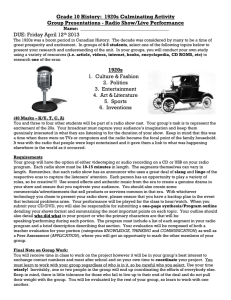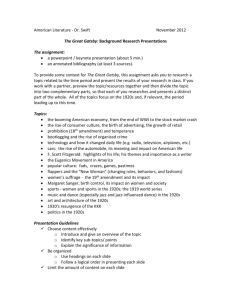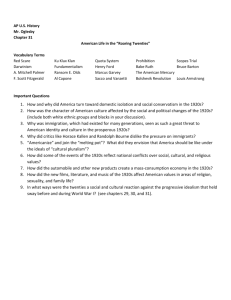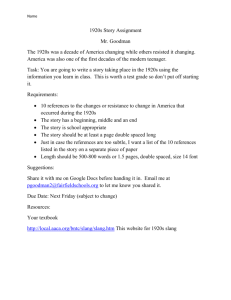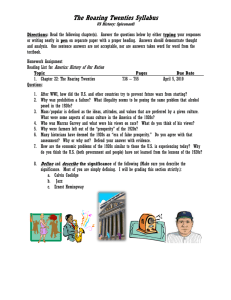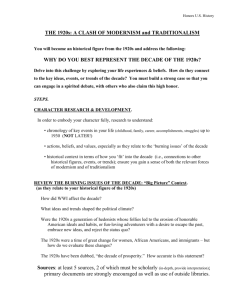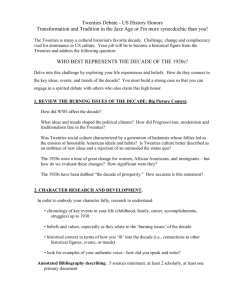1920s Debate- 1920s
advertisement
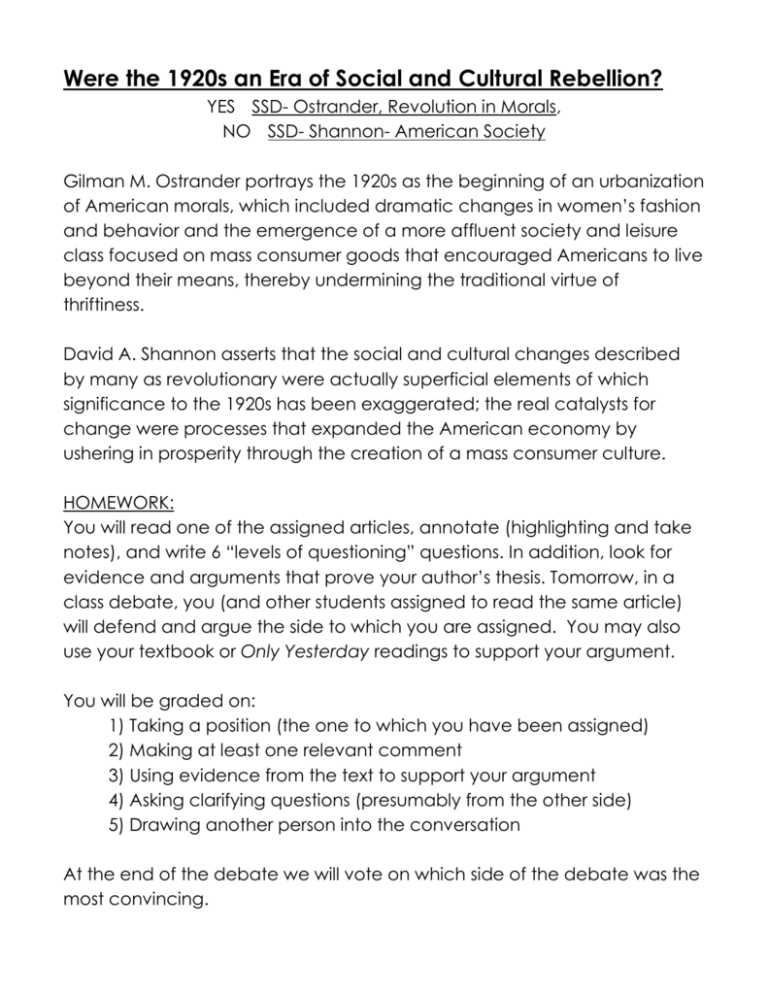
Were the 1920s an Era of Social and Cultural Rebellion? YES SSD- Ostrander, Revolution in Morals, NO SSD- Shannon- American Society Gilman M. Ostrander portrays the 1920s as the beginning of an urbanization of American morals, which included dramatic changes in women’s fashion and behavior and the emergence of a more affluent society and leisure class focused on mass consumer goods that encouraged Americans to live beyond their means, thereby undermining the traditional virtue of thriftiness. David A. Shannon asserts that the social and cultural changes described by many as revolutionary were actually superficial elements of which significance to the 1920s has been exaggerated; the real catalysts for change were processes that expanded the American economy by ushering in prosperity through the creation of a mass consumer culture. HOMEWORK: You will read one of the assigned articles, annotate (highlighting and take notes), and write 6 “levels of questioning” questions. In addition, look for evidence and arguments that prove your author’s thesis. Tomorrow, in a class debate, you (and other students assigned to read the same article) will defend and argue the side to which you are assigned. You may also use your textbook or Only Yesterday readings to support your argument. You will be graded on: 1) Taking a position (the one to which you have been assigned) 2) Making at least one relevant comment 3) Using evidence from the text to support your argument 4) Asking clarifying questions (presumably from the other side) 5) Drawing another person into the conversation At the end of the debate we will vote on which side of the debate was the most convincing. Were the 1920s an Era of Social and Cultural Rebellion? Debate Guiding Questions 1. Did the decade of the 1920s mark either a continuity with or contrast from the preceding decade? 2. What economic changes dominated the 1920s? Were these changes significant enough to call them a “revolution”? 3. What marked the changing status and behavior of women in the 1920s, and were these changes enough to call them a “revolution”? 4. What were the social, cultural and economic impacts of mass produced consumer goods in the decade following WWI, and were these impacts great enough to call them a “revolution?” 5. Did the nature of American politics in the 1920s mark a significant break with the past, and were these changes enough to call them a “revolution”? 6. Are there ways to join the arguments of Ostrander and Shannon to conclude that a much broader set of changes was put in motion that included social, cultural, and economic changes of great consequence? 7. Is it appropriate to think of the decade of the 1920s as a “new era”?

